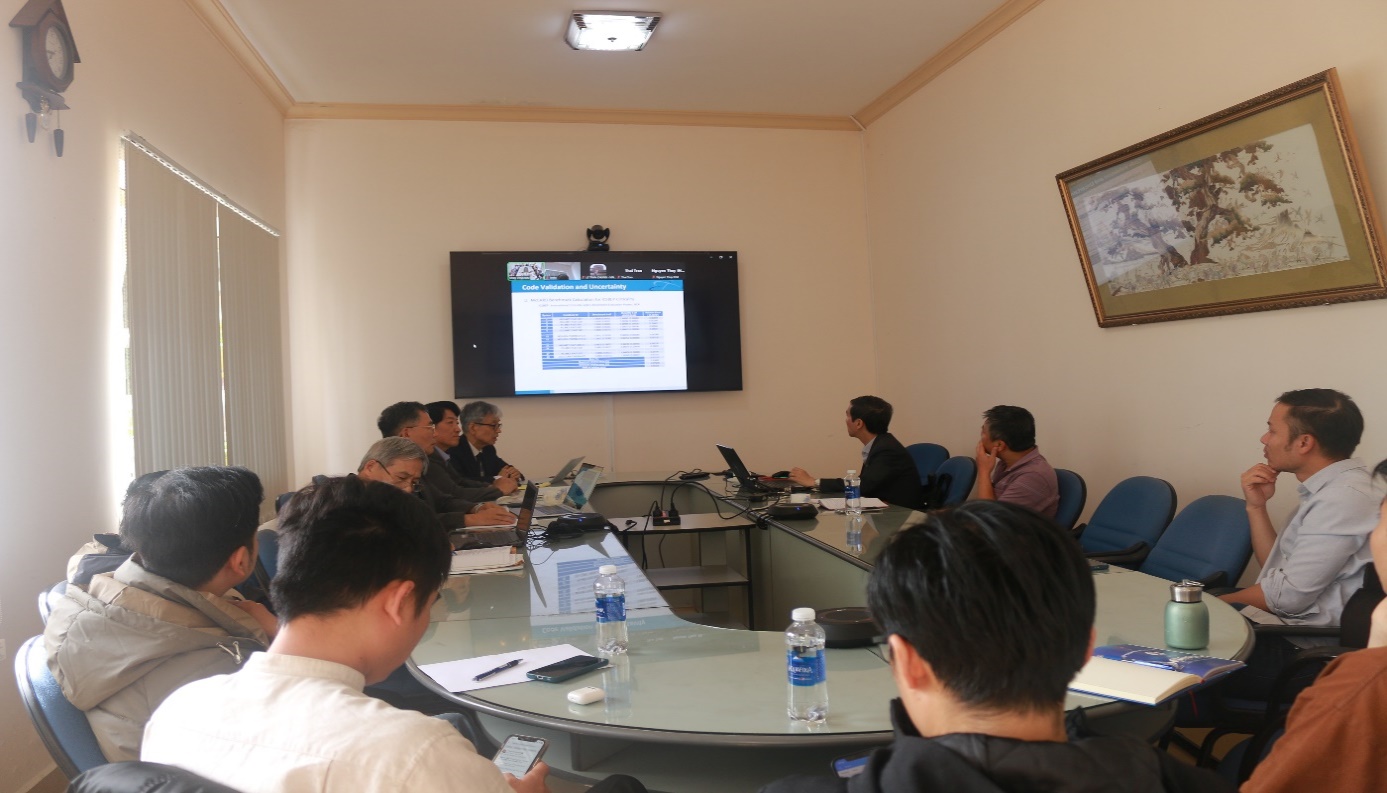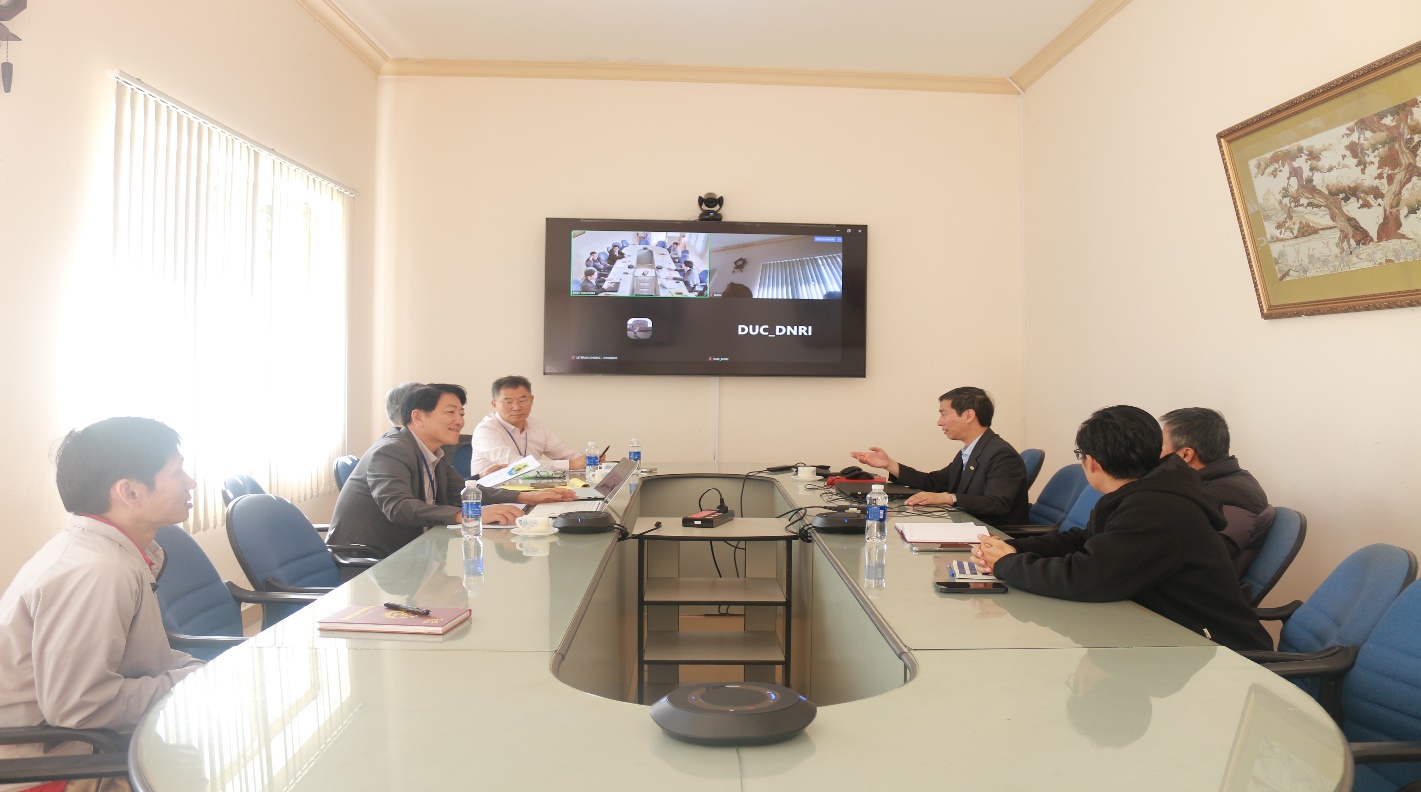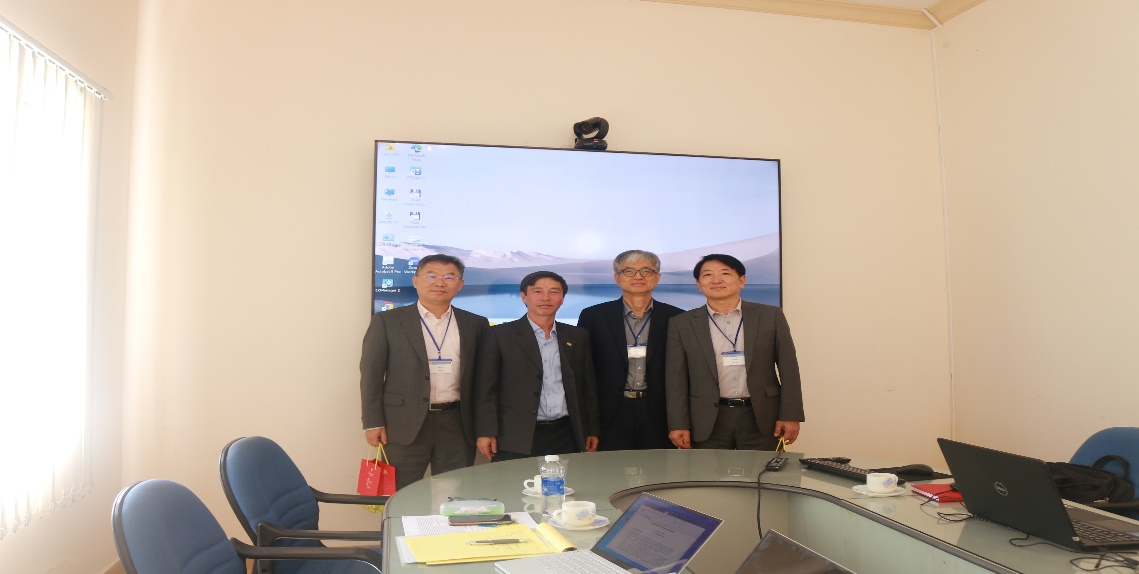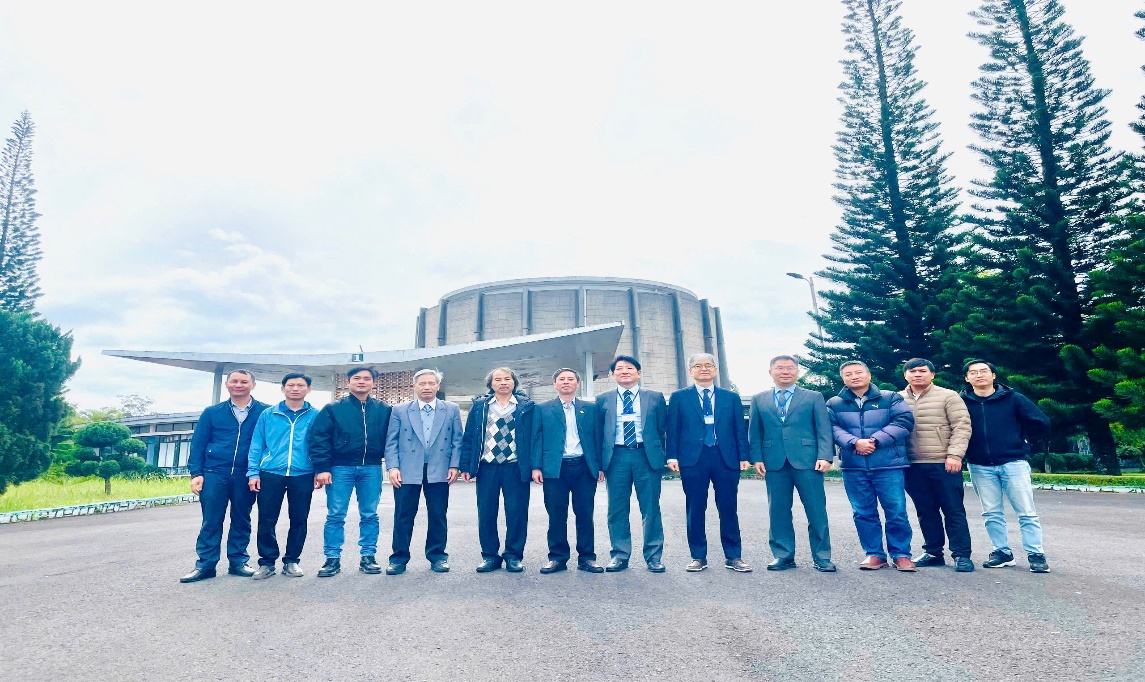The IAEA expert team worked at the Dalat Nuclear Research Institute (DNRI) as part of the 2024-2025 technical cooperation project, titled “Enhancing National Capacity for Design and Safety Analysis for a New High Power and Multipurpose Research Reactor.” Dr. Tran Chi Thanh, Chairman of the Vietnam Atomic Energy Institute (VINATOM) is the counterpart of the project. One of the key activities within this project is the exchange of experiences from experts on the implementation of research reactor construction projects, including site selection, design, construction, equipment installation, operation, and utilization. From September 23 to 27, 2024, a team of experts from the Korea Atomic Energy Research Institute (KAERI), invited by the International Atomic Energy Agency (IAEA), visited Dalat to present and exchange information with staff of the DNRI, as well as online with relevant staff from the Institute for Nuclear Science and Technology (INST) and the Nuclear Training Center (NTC) of VINATOM on the design, safety analysis, and utilization of research reactors.

Overview of the meeting
The DNRI has been operating the Dalat Nuclear Research Reactor with a thermal power of 500 kW since 1984. However, the reactor no longer meets current demands for radioisotope production for medical purposes, materials research, and conducting modern experiments. The new research reactor project of the Center for Nuclear Science and Technology is under feasibility study, in which the preparation for basic design, safety analysis, and evaluation of the exploitation and utilization capacity to achieve the project's objectives is very important. The presentations and discussions from international experts are essential to help domestic staff better prepare for project management, technical, and human resource tasks.
The expert team included experienced members in the field of research reactor design and operation: Dr. Cheol PARK, an expert in thermal hydraulics and safety analysis; Dr. Byung Chul LEE, an expert in neutronics design, fuel and core management; and Dr. Hoan Sung JUNG, an expert in research reactor design and operation, and is currently in charge of the Kijang Research Reactor (KJRR) construction project.

KAERI expert team conducted a technical exchange with staff of the DNRI, INST and NTC
With extensive experience in the design and operation of the 30 MW HANARO reactor, the 5 MW JRTR (Jordan Research and Training Reactor), which can be upgraded to 10 MW, and the ongoing design and construction of the 15 MW KJRR, the experts shared detailed, scientific information and insights gained from their project experience. Some of the topics presented and discussed included:
• Methods for neutronics design of research reactors: examples for the design and operation of the JRTR reactor; key physical parameters such as reactivity’s shutdown margin; the advantages and disadvantages of materials used for reflectors were highlighted; neutronics analysis conditions using the Monte Carlo method (McCARD code), initial core design, detailed determination of temperature and power coefficients, as well as specific applications in design calculations.
• Fuel and Core Management: validation and uncertainty evaluation of calculation results from computer codes for research reactor design; IAEA benchmark problems related to research reactors; the fuel and core management systems of KAERI, along with fuel loading strategies and fuel management practices for the HANARO, JRTR, and KJRR reactors.
• Research Reactor Design Methods: Through examples from the JRTR and KJRR reactors, classification of structures, systems, and components; design requirements for neutronics, thermal hydraulics, mechanics, and fuel, along with critical design parameters; the potential for changes and validation of thermal hydraulic and safety analysis codes.
.• Thermal Hydraulics Design: evaluation and determination of thermal hydraulic values in design, including limits for ONB, OFI, and CHFR, fuel temperature, and coolant flow critical velocity in the core; correlations for thermal hydraulic calculations appropriate for different fuel types; preparing basic parameters (power, flow rate, pressure, temperature, fuel, etc.) for input files in thermal hydraulic calculations; evaluating the obtained results with engineering hot channel factors, including systematic or random errors and uncertainties of relevant parameters in reactor design, fabrication and installation; providing specific examples from JRTR reactor design calculations, including details on coolant flow directions and core cooling during flow inversion; example of three-dimensional computational fluid dynamics calculations.
• Safety Analysis: examples from reactors designed by KAERI, such as HANARO, JRTR, and KJRR, using RELAP5 computer code; identifying key thermal hydraulic parameters in safety analysis, with specific examples from JRTR and KJRR; safety analysis procedures for research reactors, including determining initial accident conditions, safety standards, conducting safety analysis, program modifications and validation, model development, and input preparation, accident analysis examples for the JRTR reactor (LOFA, RIA, LOCA), along with accident consequence analysis.
• Operation and Utilization of HANARO Reactor: reviewing the design, technical characteristics, and operation of the multi-purpose HANARO research reactor; prominent applications including neutron diffraction, small-angle neutron scattering, neutron irradiation outside the core, horizontal beam applications, neutron activation analysis, single crystal silicon irradiation, and radioisotope production; horizontal beam instruments and their current applications, as well as nuclear material and fuel testing for nuclear power development on the HANARO reactor.
• Introduction to the KJRR Research Reactor Project: design, site selection, licensing, and related issues of the KJRR; lessons learned from the design, operation, and utilization of the HANARO reactor incorporating into the project; the site selection process and effectively utilized for KJRR, benefiting from a well-established infrastructure and local government support; key technical, safety, and operational considerations in the KJRR design along with legal, licensing, project management, schedule adherence, and equipment testing before reactor operation.
In addition to presenting key issues related to design, safety analysis, and utilization, the experts provided very specific examples from Korean research reactors that have been or are currently being designed. The experts also engaged in technical discussions concerning the New Research Reactor project being carried out by VINATOM. Staff from DNRI, INST, and NTC gained valuable and practical knowledge that can be directly applied to the new 10 MW multipurpose research reactor project. The experts further proposed future collaboration between VINATOM and KAERI on technical matters related to the design, safety analysis, and operation of research reactors, aiming to provide effective support for the ongoing project.
This expert mission represents a significant step forward in enhancing Vietnam's professional capacity, increasing international technical collaboration, and moving towards the successful implementation of the new multipurpose research reactor project and nuclear science and technology applications in the future.
Some photos of KAERI expert team at DNRI.


Translated by Dr. Nguyen Kien Cuong
Source: Dalat Nuclear Research Institute



 Contrast
Contrast 





